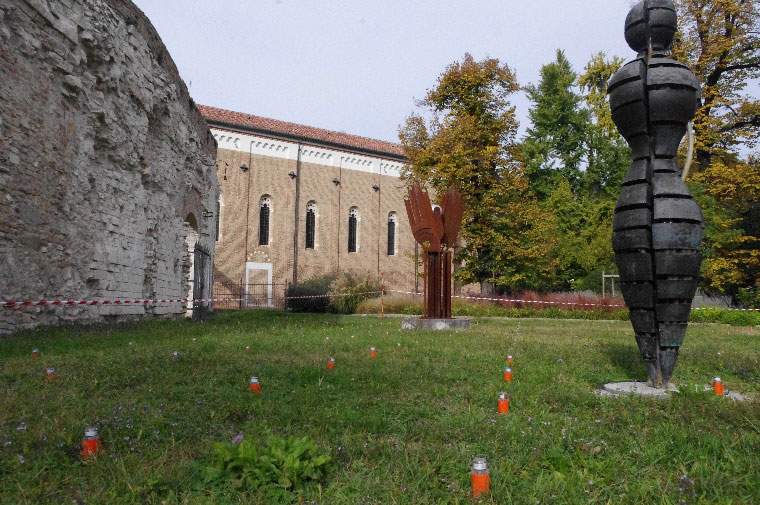In the area of the Roman amphitheater that houses the Scrovegni Chapel, an experiment was carried out between October 27 and 29 using a new sophisticated non-invasive technology.
Thanks to a recent scientific collaboration between the Municipality of Padua - Department of Culture and Ciba (Interdepartmental Research Center “Study and Conservation of Archaeological, Architectural and Historical-Artistic Heritage”) of the University of Padua, with the contribution of Stryde limited, applied geophysics researchers from the Department of Cultural Heritage and the Department of Geosciences conducted a unique test to acquire passive and active seismic data.
Stryde limited made available to Ciba some 1,500 state-of-the-art independent seismic sensors, which enabled them to monitor for about twenty-four hours all the vibrations that stress the two monuments and perform3D seismic acquisition for surface waves in two areas straddling the Roman amphitheater and near the Scrovegni Chapel.
The sensors used were created to acquire data for seismic measurements in the world of oil exploration, working according to independent nodes, with an autonomy of twenty-eight days, without the need for cables, measuring frequencies in the range of 1 Hz to 125 Hz, allowing both passive signals (noise) at very low frequencies and signals induced by controlled mechanical stresses to be recorded.
The sensors were manually fixed in the ground for a few centimeters in the areas of interest, according to a regular mesh, georeferencing individual points. Once activated and until turned off, the nodes independently recorded both passive and artificially generated signals at predetermined points with a controlled source. The entire operation was monitored through the use of an independent passive seismic sensor placed outside the Scrovegni Chapel.
The data collected in the area of the Roman amphitheater and the Scrovegni Chapel will be processed in the coming months to return a 3D model of the mechanical behavior of the subsurface and will provide important new information on the nature and complexity of the areas investigated, useful both from an archaeological and historical point of view and from a geotechnical point of view, for the knowledge and protection of this site.
The results of these non-invasive investigations will also be crucial from a cultural heritage risk monitoring perspective.
 |
| Seismic sensors could save cultural heritage |
Warning: the translation into English of the original Italian article was created using automatic tools. We undertake to review all articles, but we do not guarantee the total absence of inaccuracies in the translation due to the program. You can find the original by clicking on the ITA button. If you find any mistake,please contact us.